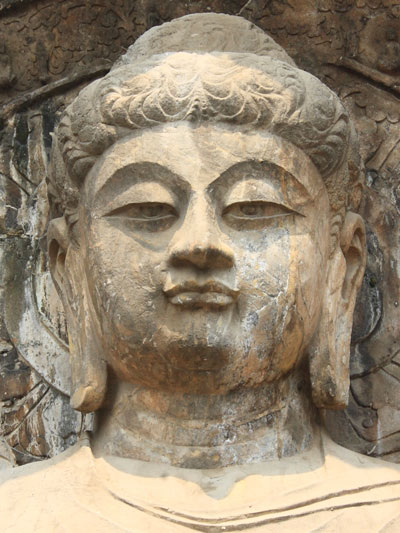
THE NEXT TIME you prepare to turn the other cheek, you might want to consider the emotional ramifications of the gesture.
A recent College of Arts & Science study has shown the turn of a subject’s head in portraiture plays a major role in the communication and perception of emotion.
Three researchers from the Department of Psychology examined more than 450 images of Jesus and the Buddha, and coded them based on the direction of the subject’s gaze in each illustration. Their goal: to determine whether the iconography of the two religious figures is consistent with the different emphasis each faith places on emotion.
Psychologists know functions performed by the left and right hemispheres of the human brain are enacted on the opposite side of the body. Emotion, which is mainly processed by the right hemisphere, presents itself on the left side of the body—more specifically, the left side of the face.
Kari Duerksen is a fourth-year psychology student. It was her interest in comparative religion that sparked the concept for the study, entitled “Did Buddha Turn the Other Cheek Too?”

Trista Friedrich (BA’14), who is pursuing a PhD in clinical psychology, and Lorin Elias (BA’95), a professor of psychology who has studied the left and right tendencies of day-to-day behaviour for more than 20 years, co-authored the paper.
The researchers uncovered a significant theme in the religious images they studied: portraits of Jesus are considerably more likely to have a leftward bias—his left cheek facing the viewer—while the Buddha is consistently represented gazing straight ahead.
Christianity is a “charismatic tradition where really strong religious experiences are associated with emotion—strong emotion,” explains Duerksen. “Whereas in Buddhism, a strong religious experience is associated with [the calming of emotion].” It suits the faiths’ respective tenets, therefore, to present Jesus embracing his religion’s inherent emotionality, while the Buddha is depicted in a more neutral pose.
Elias points out that humankind’s propensity for perceiving more emotion in the left side of the face is one of many “very basic, born-that-way, hardwired biases” seen around the world,
regardless of vast cultural differences.
On an unconscious level, artists seem to have been tapping into this quirk of human expression for centuries.
Directional biases are not exclusive to human beings, either. Friedrich, whose honours thesis examined directionality in visual media, explains that even baby chickens and pigeons have shown an overwhelming tendency to peck for food in a left-to-right direction.
“Did Buddha Turn the Other Cheek Too?” was published in the October issue of the scientific journal Laterality.
Learn more:Hear Kari Duerksen talk about her experience receiving donor-backed scholarships in her Annual Campaign for Students video. |